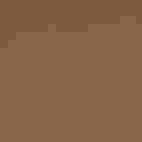American Golden-Plover
At a Glance
A trim, elegant plover. Swift and graceful in flight, probably one of the fastest fliers among shorebirds, and with good reason: it migrates every year from Arctic Alaska and Canada to southern South America. Flocks of northbound migrants, in their striking spring plumage, are seen mostly in the heartland of our continent, on the Great Plains and the Mississippi Valley; there they often forage in open fields and prairies, far from water.
All bird guide text and rangemaps adapted from Lives of North American Birds by Kenn Kaufman© 1996, used by permission of Houghton Mifflin Harcourt Publishing Company. All rights reserved.
Category
Plovers, Sandpiper-like Birds
IUCN Status
Least Concern
Habitat
Coasts and Shorelines, Fields, Meadows, and Grasslands, Freshwater Wetlands, Saltwater Wetlands, Tundra and Boreal Habitats
Region
Alaska and The North, California, Eastern Canada, Florida, Great Lakes, Mid Atlantic, New England, Northwest, Plains, Rocky Mountains, Southeast, Southwest, Texas, Western Canada
Behavior
Direct Flight, Rapid Wingbeats, Running
Population
500.000
Range & Identification
Migration & Range Maps
Northward migration in spring is mostly through Great Plains. In fall, most birds apparently make nonstop flight from eastern Canada to northern South America; some pause along our Atlantic Coast, especially after storms with northeast winds.
Description
9-11" (23-28 cm). Slimmer than Black-bellied Plover, with smaller bill. In late spring and summer, has more black below and more golden brown look above. In other plumages, usually browner with more obvious pale eyebrow. In flight, golden-plovers are much plainer; lack the black "wingpits" and are plain brown above.
Size
About the size of a Robin
Color
Black, Tan, White, Yellow
Wing Shape
Pointed, Tapered
Tail Shape
Rounded, Short, Square-tipped
Songs and Calls
A mellow quee-lee-la.
Call Pattern
Rising
Call Type
Whistle
Habitat
Prairies, mudflats, shores; tundra (summer). During migration, usually found on short-grass prairies, flooded pastures, plowed fields; less often on mudflats, beaches. Breeds on Arctic tundra. In western Alaska, where it overlaps with Pacific Golden-Plover, the American tends to nest at higher elevations, on more barren tundra slopes.
Sign up for Audubon's newsletter to learn more about birds like the American Golden-Plover
Behavior
Eggs
4, sometimes 3. Pale buff to cinnamon, boldly blotched with black and brown, well camouflaged when seen against varied tundra vegetation. Incubation is by both parents, about 26-27 days. Male reportedly incubates by day, female at night.
Young
Downy young leave nest shortly after hatching. Both parents tend young, but young find all their own food. Age at first flight about 22-24 days.
Feeding Behavior
Typically they walk or run a few steps and then pause, then move forward again, pecking at the ground whenever they spot something edible.
Diet
Mostly insects. On breeding grounds, apparently feeds mostly on insects, including flies, beetles, and others, also some snails and seeds. In migration in open fields, eats wide variety of insects, including grasshoppers, caterpillars, larvae of beetles. On shores, also feeds on small crustaceans and mollusks. In late summer, may eat many berries.
Nesting
Males perform flight display over breeding territory by flying high, with exaggerated slow, deep wingbeats, while repeatedly giving a short kt-dlink call. In courtship, male walks up to female in crouching posture with tail raised, neck stretched forward. Nest site is on ground on very open, dry tundra. Nest (probably built by male) is shallow depression in tundra, lined with lichens, moss, grass, leaves.
Conservation
Conservation Status
Huge numbers were shot in late 19th century, and population apparently has never recovered to historic levels. May be limited now by loss of habitat on South American wintering range.
Climate Threats Facing the American Golden-Plover
Choose a temperature scenario below to see which threats will affect this species as warming increases. The same climate change-driven threats that put birds at risk will affect other wildlife and people, too.





